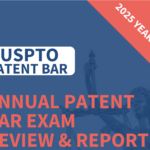Understanding the relevance of the Trademark Status & Document Retrieval (TSDR) system is essential for anyone involved in patent examinations. This blog will explore the various reasons why TSDR plays a crucial role in the patent process, simplifying the examination and decision-making stages.
Step 1: Understand TSDR Basics
Get acquainted with what TSDR stands for and its primary functionalities in the patent examination process.
The Trademark Status & Document Retrieval (TSDR) is not just a tool; it’s a gateway to understanding trademarks in the context of patent filings. It allows examiners to access essential information quickly, making it a critical component in handling patent examinations efficiently.
One of the key features of TSDR is its user-friendly interface, which ensures that even those new to the patent system can navigate it with ease. This accessibility is particularly important as it allows for a more streamlined examination process, reducing the potential for errors.
Furthermore, being familiar with TSDR can significantly reduce the time needed for the examination phase. Understanding its menus and options can empower patent examiners to make quicker and more informed judgments.
Step 2: Access to Trademark Status
Learn how TSDR provides real-time updates on trademark statuses, making it easier for examiners to assess potential conflicts.
Staying updated on the current status of trademarks is crucial for patent examination. TSDR offers this feature, allowing examiners to evaluate whether existing trademarks might affect the patent being reviewed. This immediate access helps avoid legal complications that could arise from trademark conflicts.
With TSDR, patent examiners can quickly check the status of a trademark—whether it’s registered, abandoned, or in a pending state—right at their fingertips. This capability not only saves time but enhances the accuracy of their assessments.
Another aspect worth mentioning is the integration of TSDR with other databases, providing examiners a comprehensive overview of one’s trademark landscape. This interconnectedness transforms the tedious process of cross-referencing into a smooth experience.
Step 3: Retrieve Important Documents
Explore the capability of TSDR to retrieve essential documents directly, saving time for patent examiners.
TSDR streamlines the document retrieval process significantly. Instead of sifting through piles of paperwork, patent examiners can simply pull needed materials from the system with a few clicks. This efficiency can be a game-changer during busy examination periods.
The documents provided through TSDR include crucial filings, images, and copies of trademark registrations. Having all this information in one place allows examiners to form a well-rounded picture of a patent’s standing and its implications.
Moreover, the historical data available in TSDR serves as a valuable asset. Examining past documents can illuminate patterns in trademark registrations, which may impact current patent evaluations.
Step 4: Enhance Decision-Making
Discover how access to accurate and current data via TSDR enhances the quality of decisions made during patent examinations.
The decisions made during patent examinations can have long-term ramifications. With TSDR, patent examiners are equipped with the most up-to-date information available, allowing them to make informed choices that benefit both applicants and the legal system.
Furthermore, TSDR’s robust data analytics can help identify trends in trademark filings and registrations. Recognizing these trends can influence how examiners approach their workload, potentially leading to more strategic decision-making.
Ultimately, having reliable access to data through TSDR not only boosts the confidence of examiners but also reinforces the integrity of the patent examination process. A well-informed decision today can prevent disputes and uphold patent rights in the future.
Wrap Up: The Role of TSDR in Patent Examination
In conclusion, TSDR serves as a vital resource in the realm of patent examinations. By providing quick access to trademark statuses and documents, it helps streamline processes, ensures accuracy, and ultimately supports informed decision-making.







